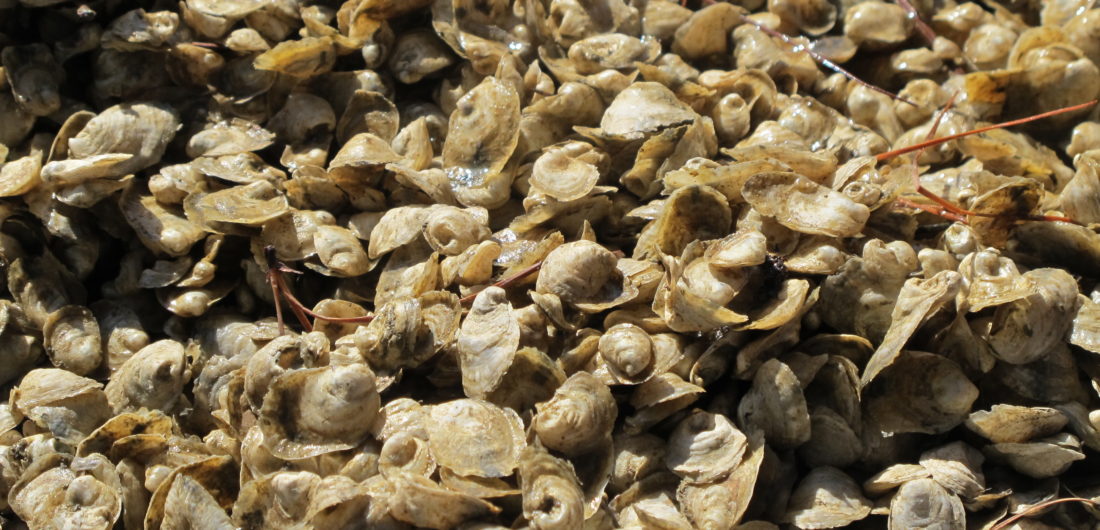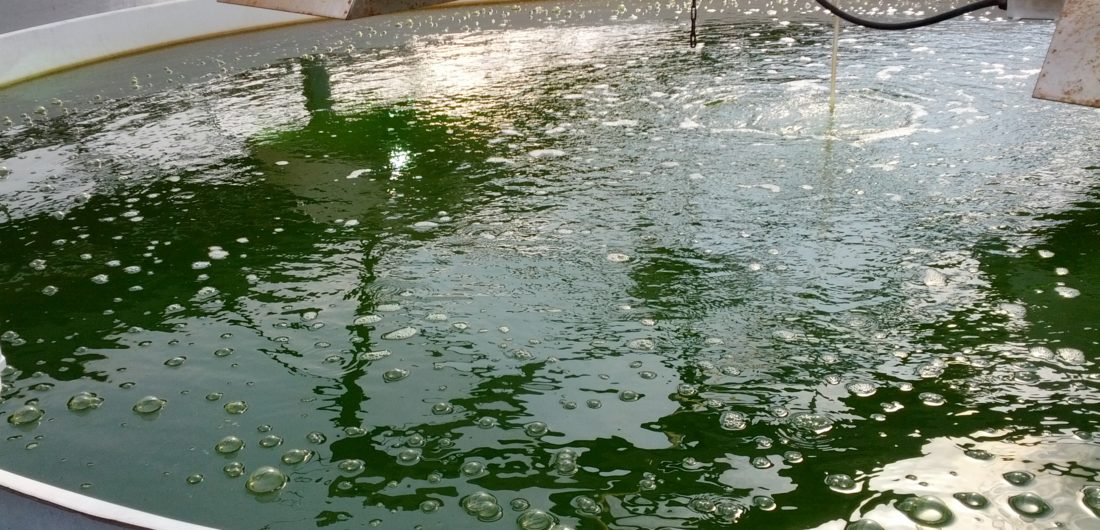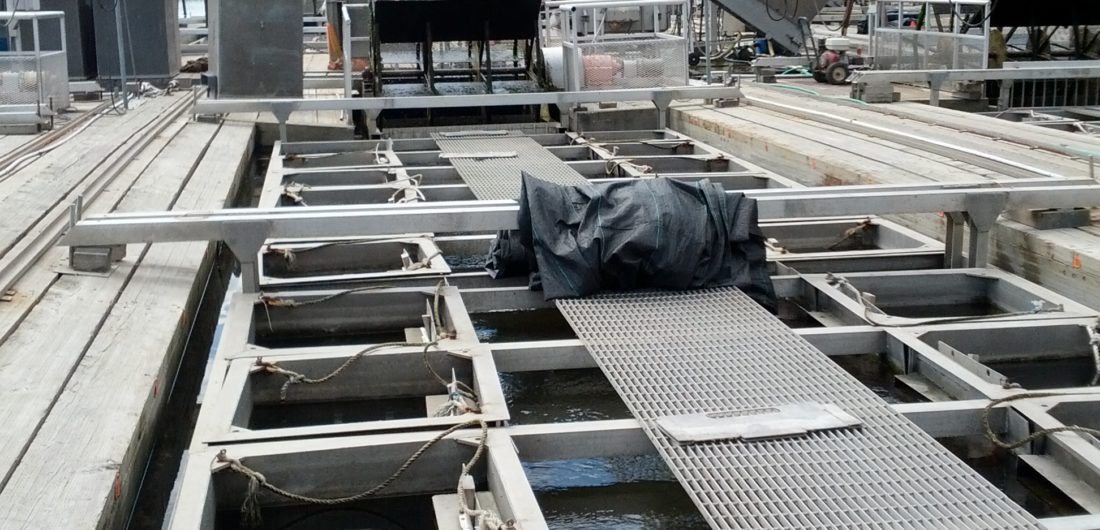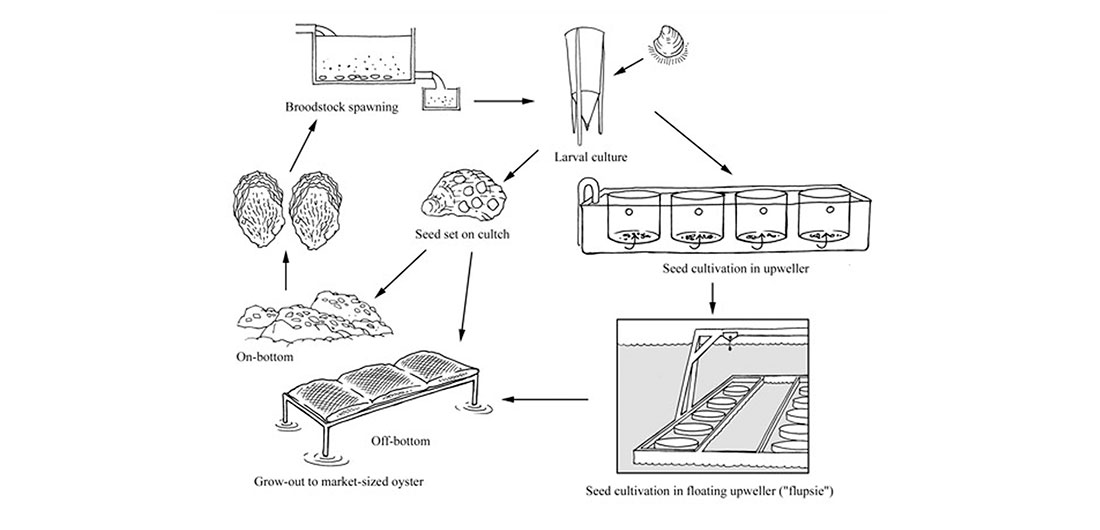Turns out, quite a lot can go wrong when raising oysters. So, modern oyster farmers have developed controlled environments for hatchery and nursery systems to improve survival rates. These systems also allow the grower to influence the look and characteristics of the oysters.
A hatchery acts as a safe haven for young oysters, where they’re sheltered and protected from predators in an indoor system. Inside these sophisticated biology labs, you’ll find an array of adult broodstock, genetic lineage charts, vats of algae and bubbling tanks full of microscopic shellfish. When the time is right, water is heated in a tank and broodstock oysters are induced to spawn. You might think that broodstock are chosen for their taste, but they’re actually chosen for their ability to grow quickly and withstand disease.
In the wild, larvae feed on algae in the water. In contrast, larvae are kept in large tanks at the hatchery, where they swim and feed on algae for about 6 weeks. The tanks hold up to 12,000 gallons and are 12-15 feet high, and the hatchery itself grows algae to feed the oyster larvae. Similar to sourdough starter, part of each algal batch is kept to cultivate the next batch. The algae is then pumped through pipes to tanks where the larvae swim. Inside the tanks, the larvae are graded by size, and the smallest or weakest ones are filtered away.
The next step is for the larvae to settle down. In the wild, when the oyster larvae develops an eye spot and a foot, it begins to search for a substrate to attach to. In the hatchery, recycled oyster shells are used to provide this substrate. You can either produce single oysters (what we’re used to seeing at the raw bar), or shellstock oysters, which are bunches of oysters which grow stuck together, and will later be used for shucked oyster meats, so the shell’s appearance doesn’t matter. For single oysters, farmers take oyster shells from shucked meat processors, dry and cure the shells, and grind them into tiny sand-like grains, providing enough room for just one oyster larvae to attach. This substrate is called cultch. Shellstock oysters, on the other hand, are grown on larger pieces of shell, with multiple spat on each side. To encourage the spat to settle down, water is pumped downward in the tank to move everyone along.
When the spat has set and is about 2 mm in size, they are moved to the nursery. This is akin to a halfway house between the indoor hatchery and being unprotected outdoors. The nursery consists of tanks suspended over a floating upwelling system (FLUPSY). Like humans, the fastest way to get oysters to grow is to stuff them silly with plenty of food around the clock. So, oysters are placed above an upwelling system which brings food to the oysters. Usually this looks like a motorized paddle wheel which constantly pumps fresh water over the oyster larvae, bringing algae and nutrients toward them. The oysters are put in bins with screens on the bottom, so water and algae can be pushed up from underneath. This constant flow of food and water ensures that the oysters get enough to eat and grow quickly. Every few weeks, the oysters are put into bins with larger screen holes, so that more food and water can enter. Meanwhile, the oysters are graded by size, and resorted into bins with oysters of the same size. That way, larger oysters aren’t outcompeting smaller ones for food, and the final sizes of the oyster crop are more uniform.
Not all growers have hatchery and nursery facilities. In fact, very few do. Most growers buy seed for their farms from seed suppliers. Taylor Shellfish is one of our primary partners, and they operate a hatchery and nursery. They supply the seed for many West Coast oyster farms. On the East Coast, Mook Sea Farm is a popular supplier for oyster seed, as is the Rutgers University shellfish research lab.
Once the oysters have grown enough, usually about 20 mm in length, the spat are transferred to grow-out areas, where they’ll remain until they’re harvested for sale. Learn more about the different types of grow-out here.




